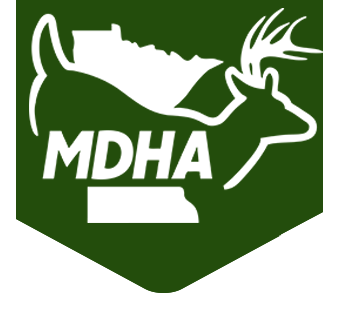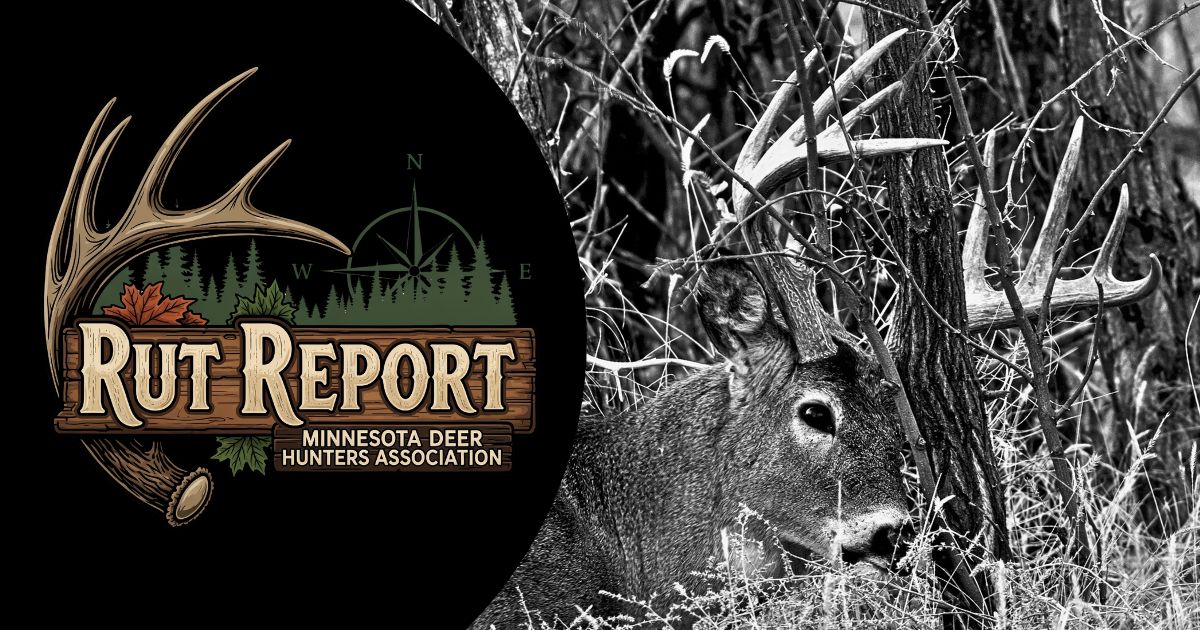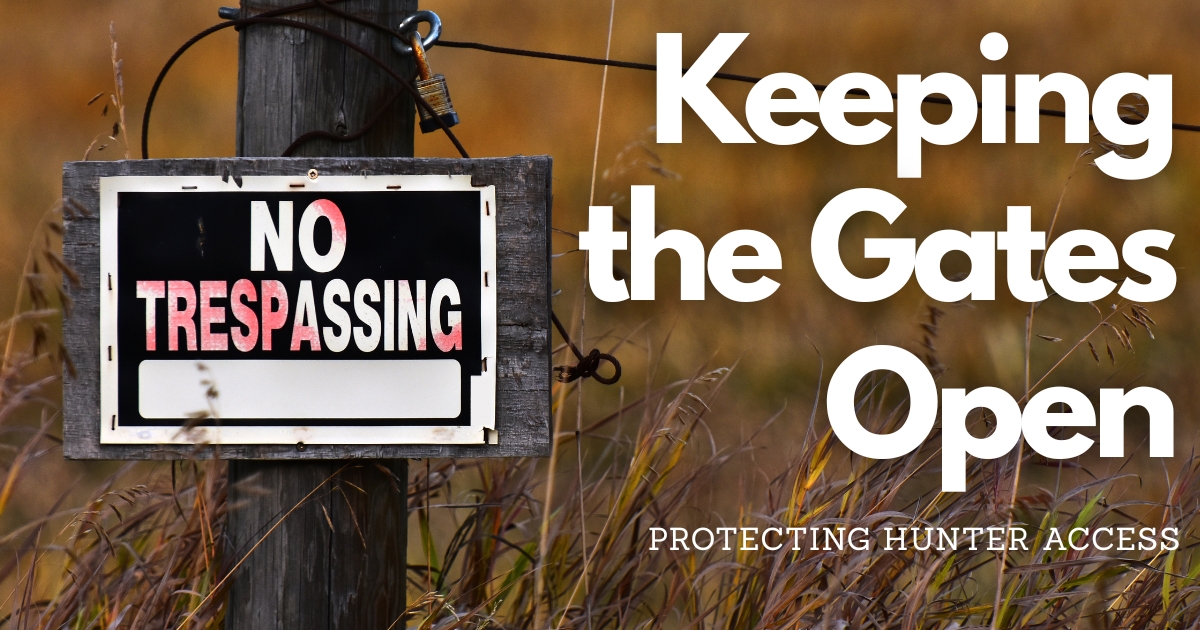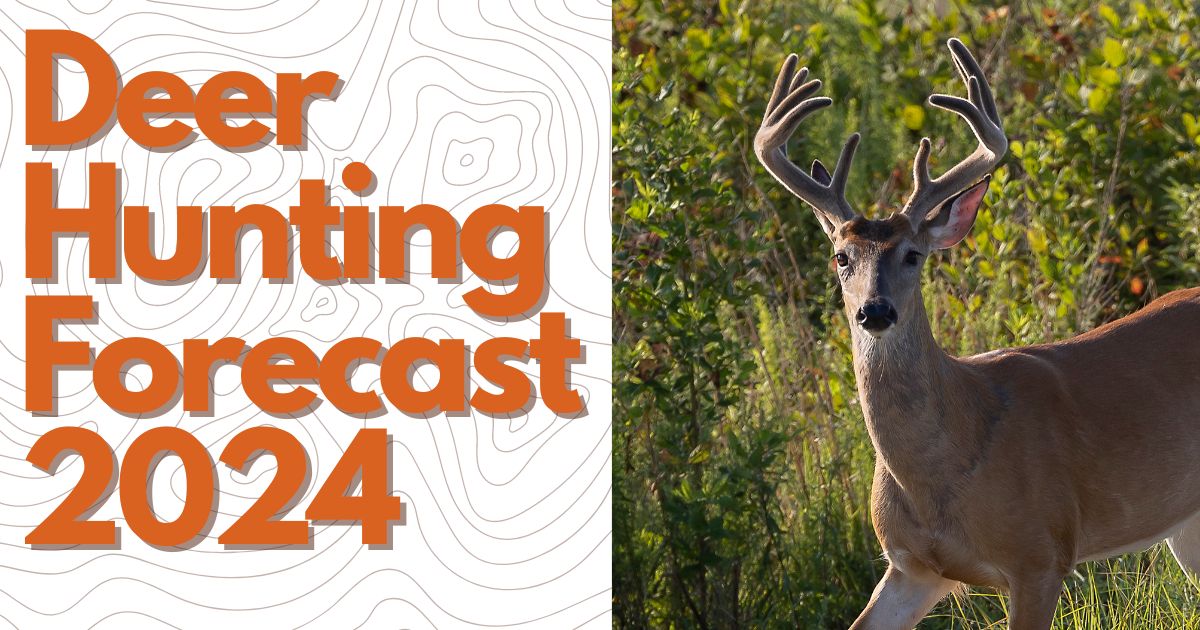
- Tom Rusch
- From Whitetales
- Hits: 12304
Deer Hunting Forecast 2024
- Tom Rusch
- From Whitetales
- Hits: 12304
I remember those mild winters like it was yesterday. The entire winter was mild. Spring actually came in March. The resulting long growing season was exactly what northern whitetails needed. Just like the winter of 2024 is what the deer herd needs now.
Why? Because the deer seasons that follow exceptionally mild winters have been good to me and I look forward to this fall with anticipation. Mild winters have a dramatic impact on our deer herd just as severe winters do. But, the impact is positive! Short winters produce longer growing seasons in the North. Shorter winters drastically increase winter survival. Does come through in excellent physical condition, fat and healthy versus skinny and emaciated. As a result, does produce a high percentage of twin fawns and with early green-up, does also produce higher quantities of nutritious milk for two, and sometimes three, healthy fawns.
Fawns are Key
A healthy fawn crop is the key to population recovery. Along with healthy habitat, it is the foundation for producing sustainable deer populations and hunting seasons. Strong reproduction means more breeding does which means even more fawns. The growth compounds like the stock market in good years.
For the record, the “Lost Winter of 2024” was statistically the warmest winter on record going back to the 1880s when record-keeping started. A combination of an El Nino weather pattern and human-caused climate change resulted in record high temperatures (Dec-Jan-Feb), historically low snow totals and nights below zero. This combination of weather events produced the mildest winter in 140 years.
In addition to a “banana-belt” winter, we were blessed with a banner acorn crop in 2023. Acorns are the best food source available in the Northern forest, bar none. Both red and white oak produced an epic crop that deer consumed all fall and winter. Deer went into winter with excellent body fat conditions and came out of winter in great condition. This will pay dividends for both the individual and population down the road.
Think about it…if does have just one fawn following severe winters and then lose half of them to poor nutrition, starvation, predators, disease and accidents the population stagnates. No growth. Fewer permits. Fewer sightings. Poor hunting. Declining harvest. Consternation. Recognize that pattern? That’s been our status quo for the last 10 years.

Let’s take a simplified look at a Northern forest deer population to illustrate population growth. Start with one square mile of forest (640 acres). “Deer per square mile” is the standard measurement for deer density. There are 16 40-acre parcels in a square mile. Most northern Minnesota “Deer Permit Areas” have 10-20 deer per square mile in the spring after winter and before fawns are born. This is the lowest population level of the year.
Every Deer Permit Area is different, but in general a herd with 15 deer/mi2 breaks down like this in early Spring: 9 adult does and 6 adult bucks. Fawns from the previous year are now considered adults.
In late May through June, adult does give birth to 10-15 fawns in a normal year following a moderate winter. So, the herd has now nearly doubled, increasing to 25-30 deer/mi2.
In better Northern forest habitat 20 deer/mi2 is not uncommon which is made up of 12 does and 8 bucks swelling to 40 deer mi2 after fawns are dropped. In poorer forest habitat has only 10 deer/mi2 with the herd consists of just 6 does and 4 bucks increasing to 20 post-fawn. This highlights how important habitat is! Permit Areas that are side by side can vary 2-3-fold. This is regardless of the wolf population.
Fawning Period
A great way to see fawn production first hand is to take weekly rides around your hunting area starting in mid-June. Trail cameras are also a great tools. Watch for yearling deer (1-year olds that look like sleek little 100# does) becoming visible in mid-May prior to fawns being dropped as they get run off by the mother and have to fend for themselves for the first time. This will tip you off that fawn drop is imminent.
When does drop their fawns she keeps them separated by a few hundred yards, spending the first 2-3 weeks hiding and do not follow their mother to avoid being killed by predator(s). New fawns become increasingly visible in late June. By the 4th of July you will start to see twin fawns travelling together with their mother. This is why July is the best month to assess annual your annual fawn production. Fawns are extremely vulnerable to predators and losses are highest in summer. Fawn numbers decline throughout their first year due to predators, hunting, disease, roadkill and other factors.
Expectations for 2024
Mild winters like 2024 really tip the balance back in favor of deer, where severe winters and poor habitat tip the balance in favor of wolves. Wolf predation is significantly lower during mild winters. Pup survival is lower as a result. Back-to-back mild winters are a godsend for the deer herd and put a dagger in wolf reproduction/recruitment. This is 180 degrees different than the previous 2 years and the majority of the previous decade.
Deer sightings will be up significantly in 2024. With excellent fawn production and good yearling survival, young deer, which are the most visible segment of the herd, will increase deer stand sightings dramatically in 2024. But, deer managers will establish conservative numbers of antlerless permits to allow deer populations to rebuild. Harvest will also be conservative as a result. But, buck harvest, the best indicator of population growth, will increase. The better habitat will show a corresponding increase sooner than poor habitat, regardless of the wolf population.
But, it does take time. The real payoff will come in fall 2025 when these fawns become yearlings and the bucks grow their first racks. Barring a return of old man winter, the ’25 season will be a return to normal. Deer on a high nutritional plane for their entire life show incredible growth from year to year.
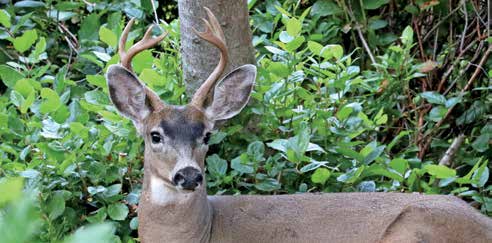
Eighteen-month-old bucks can grow beautiful basket racks of 4 to 8 points under these conditions. We saw this throughout the early 2000s. Dressed body weights also increase dramatically following mild winters.
Same for adult bucks that survived the severe winters. Two and one half and 3 1/2-year-old bucks can put much more energy into body growth and antler production when they are not decimated by winter. Early green-up gives them a huge head start. These bucks will be heavier and their racks will have greater mass, spread and tine length. The better the habitat the greater the improvement and growth.
Does also show excellent improvement across the board in body weight, body fat, milk production and fawn: doe ratio. Fawns (~50% female) generally need a year to mature before breeding at 1 ½ years of age in the north. In excellent habitat (think central + southeastern MN) doe fawns can breed at 6-7 months and produce fawns at age one. This wild card is an accelerant to population growth in all agricultural areas of the state. Because yearling does are the largest segment of the breeding population, young does having fawns really spurs population growth.
Large fawn “classes” become large breeding doe classes (think baby boom in human terms) throughout their life spans. MN DNR research in northern Minnesota demonstrated how prolific does can be in forested habitats. They can live to be over 15 years old and produce twin fawns year after year well into their teens. They are survivors even in the face of annual hunting seasons, wolf predation and old man winter. After severe winters, much smaller fawns crops reverse this momentum. Back-to-back winters put the reproductive capacity to its knees and the impacts of predators are much more apparent (and highly controversial lightning rods for the media).
Moving Forward
I like to hit “re-boot” after these low deer drought years. Think positive. Start over. Assess your hunting area, strategy and habitat. I think the most critical thing lacking after a dry spell is confidence. Just like a losing year in a sports season negatively affects a hockey/football team, so does a deer population in decline.
Starting over with a positive mindset creates optimism. This is contagious in a deer camp. Changing your game plan creates some excitement. Start with an assessment of your stands and hunting spots. Scouting is the key to affecting positive change. Find new areas and move or set up new stands. Look for the best available habitat, deer sign and lowest hunting pressure.
Hunting partners that focus on the negative are also contagious and can pull the entire camp down before the hunt even starts. Avoiding a negative mindset can go a long way to achieving success. Hunting is supposed to be FUN.
New hunting spots increase confidence. Hunters resist change. But a “failure to plan (for change) is a plan to fail.” Deer patterns change. Visibility changes in the woods. Finding last year’s rubs and scrapes
increases confidence. Confidence gives you incentive to get out of bed and sit longer in new spots which increases your odds of success. Sitting in old spots that have “gone by” will likely result in the same success. Old deer stand memories are great but they don’t kill deer.
Locate (or create) new or better habitat. That is what Northern deer do. Sitting in the same stands that yielded poor results over the previous five years is likely to yield the same results. An empty buck pole.
Deer distribution is not “Rocket Science,” but it does require scouting on an annual basis to see the changes that the deer react to. In Midwest farm country it boils down to corn, alfalfa and soybeans. Crops rotate and deer adjust. The Northern forest changes occur more incrementally. Adjusting your hunting set-up is just as important up North, over time.
Even when the deer herd is healthy, 30 deer per square mile boils down to 2 deer per 40 acres. Only 1 deer per 40 acres on average in the last 10 years, give or take. But, they don’t spread themselves out evenly on the landscape. They are found in clusters or small doe-fawn groups. The doe-fawn groups are usually in or near the best food sources and cover. Come November the bucks will be there, too. There is a lot of “dead area” in the Northern forest, areas with poor food, inadequate cover and/or high hunting pressure. Hunting deer in these areas yields low odds for punching your tag. Even more so if you are limited to bucks only hunting as many hunters are in down years.
Tips: Start fresh. Find the best November food source(s) in your area. Find the best adjacent cover with adequate visibility. Find the best deer sign. Fresh rubs, scrapes and beds will put you in the kill zone. Then put in your time. Hunt downwind and rotate stands based on wind direction.
Use your trail cameras to gain confidence in new areas or assess traditional spots. Some good habitat areas just have too much hunting/human pressure come fall. Bear and grouse hunters along with leaf-drop can change deer patterns drastically. Add deer hunting/scouting to the mix and deer can go nocturnal pretty quickly even before the season gets started. Set cameras up in early September to monitor food sources, travels corridors and major crossings to increase confidence levels and assess change in patterns or use over time. Change is constant.
Antler Growth
Mild winters have another positive outcome: phenomenal antler growth and body weights on breeding age bucks. These are the years that produce the most “wall-hangers” and 200# bucks in the North. Look back on your hunting career and in your camp journals, talk to Grandpa. Big bucks are killed the year after mild winters like 2024.
Both 1998 and 2012 were years like this. They were also the beginning and end to that Minnesota deer hunting era we all remember as the good old days. Both years had absolutely phenomenal antler growth throughout the upper Midwest. Short winters, early green-up, adequate precipitation and long growing seasons are the prescription for top end antler growth. Increased mass, longer tines and main beams yield impressive antler growth. Top “record book” counties throughout the Midwest produce at least one Boone + Crockett buck a year, on average. These same counties produced historically high numbers of B+C bucks in 2012. It was the perfect storm where everything came together. Many hunters and deer camps shot personal best bucks and camp-record bucks in those years.
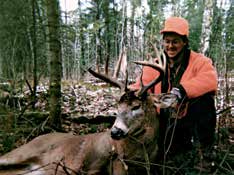
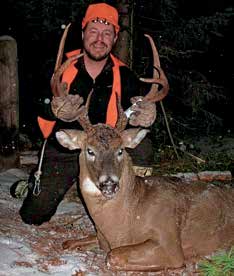
2024 Hunting Season
So, what can we expect for the 2024 deer season? In a word “improvement” and “hope.” More young deer. The best fawn production since 2018. More yearling bucks as fawn survival improved dramatically last winter. Some nice-lookin’ bucks. Grip + Grin camera time! Definitely more deer sightings on the deer stand as a result. But, fewer antlerless permits and more bucks-only seasons to enable the herd growth process to occur. Patience. There will be limited opportunity in the Arrowhead which has the longest, toughest winters and lowest deer populations. There will be more antlerless permits/opportunity to kill a deer in NC and NW Minnesota but still conservative this year to allow for herd recovery.
If winter 2025 is favorable for deer, the cycle will have come full circle, and we will harvest 200,000 deer in Minnesota for the 1st time since the goal was established in 2012.
